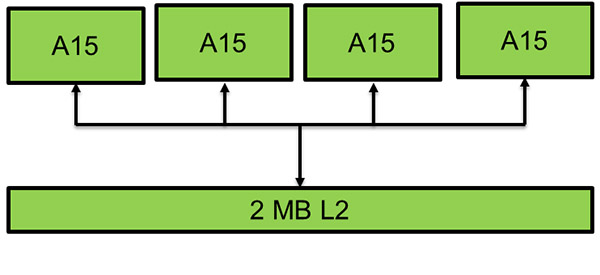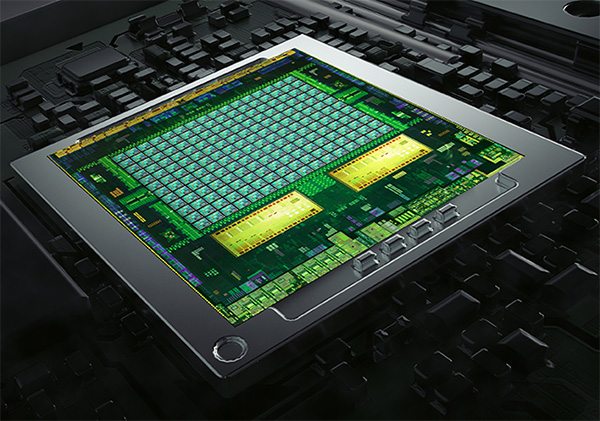Nvidia Tegra K1 In-Depth: The Power Of An Xbox In A Mobile SoC?
Nvidia gave us an early look at its Tegra K1 SoC at its headquarters in Santa Clara. By far the most noteworthy change is a shift from programmable vertex and pixel shaders to the company's Kepler architecture, enabling exciting new graphics capabilities.
Tegra K1’s CPU: An Updated 4+1 Cortex-A15 Design
Nvidia and Samsung both utilize cores designed by ARM, while Qualcomm and Apple build their own cores using ARM’s instruction set. Tegra 4 was Nvidia’s first effort based on Cortex-A15, and it ran at clock rates up to 1.9 GHz. The company sticks with Cortex-A15 in its 32-bit Tegra K1, but makes some improvements that it claims facilitate up to 40% more performance at the same power level or allow the SoC to use 45% of the power at a specific performance point in SPECint2000.
Those are some fairly substantial claims given the same processor generation. Yet, Nvidia says that they’re the product of three factors. First, its engineers have all of that time building Tegra 4 under their belts. Although this is Cortex-A15, there are purportedly some layout-related optimizations unique to Nvidia’s implementation. The shift from TSMC’s 28 nm HPL to HPM process brings dynamic power down a bit as well. Finally, ARM is on its fourth revision of Cortex-A15. Tegra K1 employs r3p3 (the third revision), whereas Tegra 4 was based on r2. According to ARM’s technical documentation, most of the changes between the two SoCs are related to regional clock gating and a couple of other configurable power-saving options. Estimates put the performance/watt improvements between 5 and 10%. As a result, Nvidia reaches clock rates as high as 2.3 GHz with the quad-core Tegra K1.
The flexibility to choose between higher performance or lower consumption means that Nvidia can allocate its power budget more freely than the generation prior, scaling back on the CPU in favor of its graphics engine, for example. In graphics-bound applications, this is precisely what you’d want to see. Doubly so given Tegra K1’s broader API support, which at least make it technically feasible for developers to port higher-end titles down to Android-based tablets.
Notably less was said about the dual-core Denver-based model, except that its wide superscalar execution pipeline should facilitate notably better threaded performance and fast single-core speed at clock rates of up to 2.5 GHz.
Get Tom's Hardware's best news and in-depth reviews, straight to your inbox.
Current page: Tegra K1’s CPU: An Updated 4+1 Cortex-A15 Design
Prev Page A Little Bit Of The PC In Your Next Tablet? Next Page Putting Kepler Into Tegra: It’s All About Graphics-
RupertJr "Approx. Comparison To Both Last-Gen Consoles"Reply
Why don't you update the graph title to "Prev Gen Consoles" since last gen consoles has 1.23 TFLOPS (XBOX One) and 1.84 TFLOPS (PS4) performance difference to this K1 chip is huge. It looks like NVidia will loose another battle... -
renz496 Reply12372657 said:Where is the maxwell stuff did they not even address it yesterday? WTF
most likely they will talk about it when the actual gpu is close to release. -
Wisecracker ReplyAt least in theory, Tegra K1 could be on par with those previous-generation systems ...
AMD does it. Intel, too. But ...
When it comes to over-the-top hype, embellishment and hyperbole, nVidia is the king.
-
ZolaIII @ Rupert JrReply
Well multiplied 3x & with higher memory bandwidth you are there.
1.5x Maxwell & 2x cores (28nm to 16-14nm).
Hyper memory cube.
All this in 2015. -
RupertJr @ZolaIIIReply
but what you are assuming does not exists nowadays and maybe until years...
where will be other chips at that time? -
dragonsqrrl "in fact, the first Maxwell-powered discrete GPUs are expected in the next few weeks"Reply
Excellent. -
InvalidError Reply
Well, they are right on at least one thing: 2014's SoCs are now about on par with high-end components from ~7 years ago or mid-range gaming PCs from ~5 years ago and are managing to do so on a 2-3W power budget, which is rightfully impressive IMO.12373063 said:It looks like NVidia will loose another battle...
If SoCs continue improving at this pace while PCs remain mostly stagnant, the performance gap between SoCs and mainstream PCs will be mostly gone by the time 2015 is over. -
Shankovich I'm assuming this SoC will run at around 15 watts. With 192 CUDA cores and DDR3 LP, your max output will probably be somewhere around 180 GFLOPS. Yes yes it CAN do the same effects as consoles and PC, so what? If the Game Cube had DX 11.2 api running on it, it could as well, but obviouslt it coiuldn't put too much on the screen. This will be the same deal with the K1.Reply
It's cool, I like it, don't get me wrong, but the stuff they're saying, though technically correct, is so misleading to about 90% of the market. People are going to think they have PS4's in their hand when in reality they have half a xbox 360 with up to date API's running on it.


